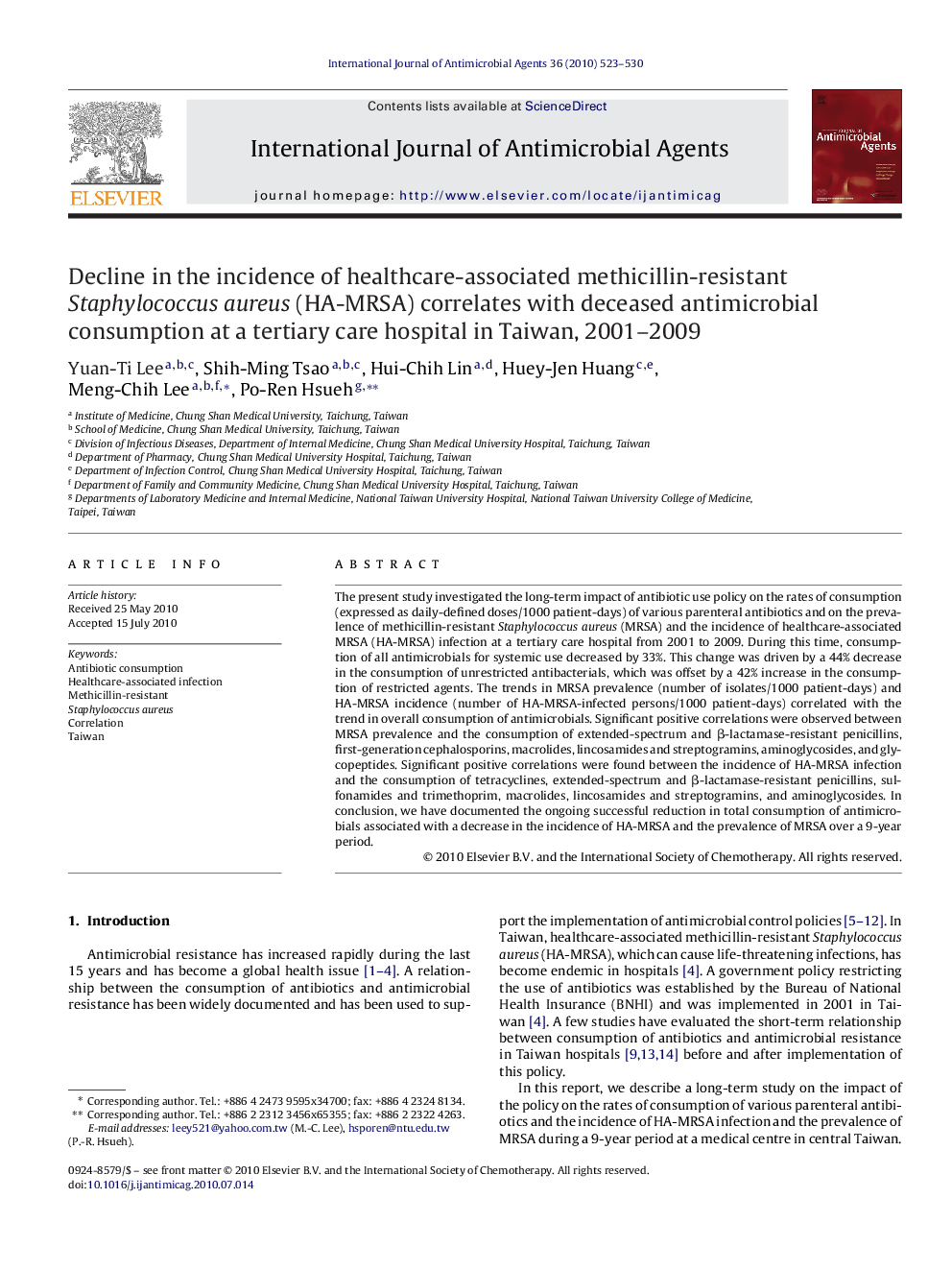| Article ID | Journal | Published Year | Pages | File Type |
|---|---|---|---|---|
| 3360054 | International Journal of Antimicrobial Agents | 2010 | 8 Pages |
The present study investigated the long-term impact of antibiotic use policy on the rates of consumption (expressed as daily-defined doses/1000 patient-days) of various parenteral antibiotics and on the prevalence of methicillin-resistant Staphylococcus aureus (MRSA) and the incidence of healthcare-associated MRSA (HA-MRSA) infection at a tertiary care hospital from 2001 to 2009. During this time, consumption of all antimicrobials for systemic use decreased by 33%. This change was driven by a 44% decrease in the consumption of unrestricted antibacterials, which was offset by a 42% increase in the consumption of restricted agents. The trends in MRSA prevalence (number of isolates/1000 patient-days) and HA-MRSA incidence (number of HA-MRSA-infected persons/1000 patient-days) correlated with the trend in overall consumption of antimicrobials. Significant positive correlations were observed between MRSA prevalence and the consumption of extended-spectrum and β-lactamase-resistant penicillins, first-generation cephalosporins, macrolides, lincosamides and streptogramins, aminoglycosides, and glycopeptides. Significant positive correlations were found between the incidence of HA-MRSA infection and the consumption of tetracyclines, extended-spectrum and β-lactamase-resistant penicillins, sulfonamides and trimethoprim, macrolides, lincosamides and streptogramins, and aminoglycosides. In conclusion, we have documented the ongoing successful reduction in total consumption of antimicrobials associated with a decrease in the incidence of HA-MRSA and the prevalence of MRSA over a 9-year period.
